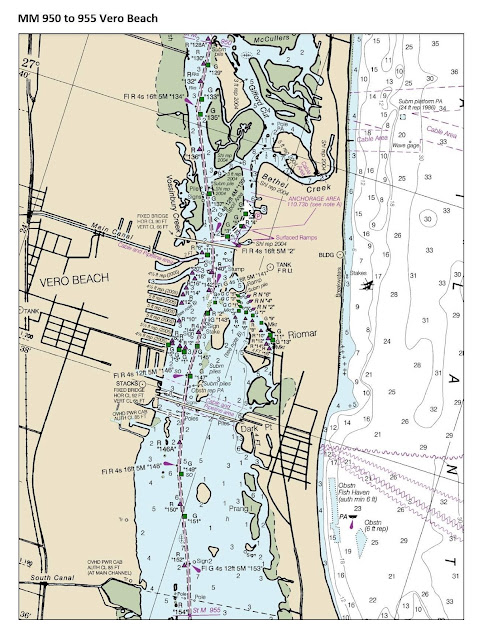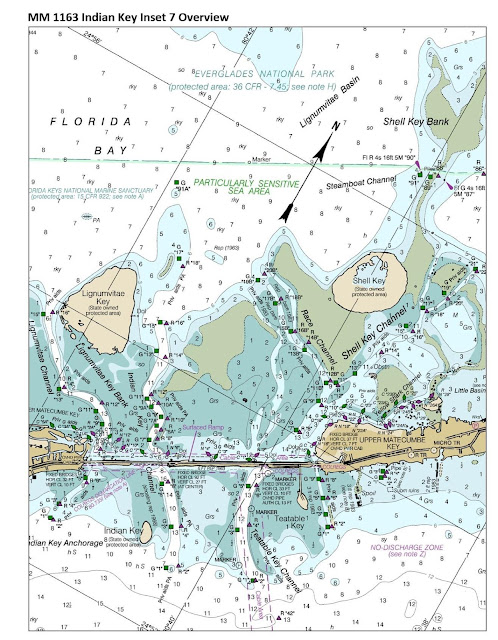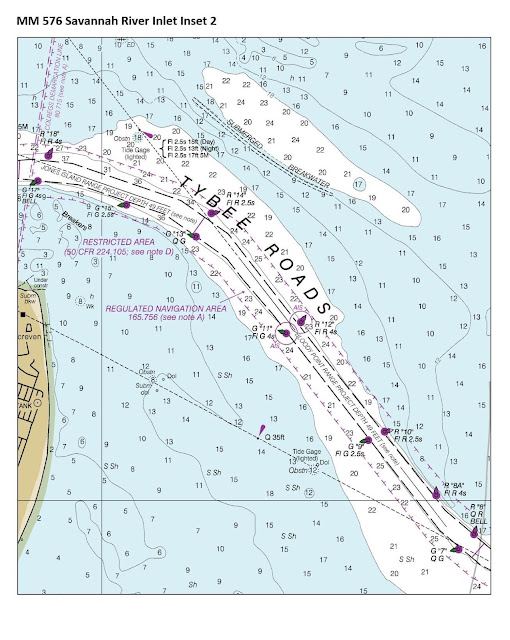The 2024 ICW Chartbook is now available from Amazom.com which includes 385 charts from 29 NOAA chartkits covering:
• Norfolk, VA to Key West, FL
• St Lucie to Ft Myers and part way down the coast
• 17 major inlets along the ICW
Link at: 2024 Atlantic ICW Chartbook
Note: Amazon does not proivde a spiral bound copy. The photo is of a chartbook taken to a local binder where he converted it to spiral bound for $5.
Why publish a chartbook in paperchart format (RNC) when you can see the digital version in Aqua Map, Navionics, or your chartplotter? Well, in all fairness, the raster version provides some detail such as bridge heights and feature names with an overall view of a channel that can be useful in finding your way down the ICW. Since each page covers 5 miles, it's easy to flip a few pages in planning mode to see where you would be 40 or 50 miles down the ICW.
Each page of the chartbook covers a five mile segment of the ICW which results in 385 pages of charts. Every mile of the ICW from Norfolk to Key West and across from St Lucie to Ft Myers is covered with no gaps. Many inset charts are also included for added detail in busy areas along with 17 inlets along the ICW. With a chart zoomed in to cover every 5 miles, the features (bridge names, clearances, buoy labels, etc.) are generally larger and easier to read than the NOAA charts scaled for Carriage Requirements (see the last photo for more explanation on this point).
The Table of Contents is in mile marker order with page numbers for quick access to the chart you want. An index is provided at the end for accessing the same information but in alphabetical order using familiar place names, again with page numbers.
Detail contents in 385 color charts:
• Northern Approach to Norfolk VA
• Norfolk VA to Albemarle Sound
• Dismal Swamp to Albemarle Sound
• Albemarle Sound to Key West, FL
• St Lucie, FL to Ft Myers, FL (both the shore route and across Lake Okeechobee are included)
• Ft Myers, FL to Matanzas Pass, FL
• Matanzas Pass, FL to Key West, FL (not in 5 mile steps)
• 17 Inlets along the ICW
• List of NOAA chart notes
The attached photos are pages out of the Chartbook to illustrate editing with insets used to maximize the readability of the charts.
Note: the charts are shown at a reduced resolution in the overview for quick loading which may appear blurry in some sample pages. To view a sample chart at the full resolution used in the Chartbook, just tap or click on any chart for the photo view.
This list of NOAA charts was used in the compiling of the chartbook, including:
- Chart Title
- Chart Number
- Last Correction (to the chart)
- Cleared thru LNM No. (updated through the date shown)
- Cleared thru NM No. (updated through the date shown)
Example of a 5 mile section of the chartbook showing the northern entrance to the Alligator River in North Carolina
The chart below is an example of a detail chart of an important area that’s added to the chart group. In this case, it’s the approach shown in the chart above but in a zoomed in view for easier interpretation.
Here’s another example of a detailed chart included within the 5 mile charts. It’s an area just north of Beaufort, NC, that is often confusing to boaters due to multiple channels and ATONs. The detailed chart makes the ICW route clearer.
When space permits, an inset chart is included in the 5 mile chart to better show a critical section of the 5 mile chart. In this case, a detail inset chart is shown of Hell Gate just south of Savannah, Georgia.
The 5 mile chart that includes Vero Beach is very busy and hard to read so on the next page, I included a zoomed in chart to better show details of the area. The area near the entrance to Vero Beach is shown on the next page in a zoomed in view for clarity.
Inserts are added for nearby areas of interest even if not part of the ICW. In this case, many boats take the Angelfish Creek passage so it’s included in the chartbook. A zoomed in view of Angelfish Creek is shown in the next page in the chartbook.
The 5 mile chart in this area of the Florida Keys is difficult to read due to a lot of detail so the next two pages of the chartbook show zoomed in views of the same area for easier navigation. Remember, if you want to see the resolution of the chart that’s in the chartbook, just tap or click on the photo below for the high resolution image printed in the chartbook.
The eastern part of the passage at Indian Key is shown in a zoomed in view on its own page.
Likewise, the western part has its own zoomed in page too.
The 5 mile chart for the approach to Clewiston on the Lake Okeechobee is shown here. Note the detail shown on the OMM 60 to 65 Clewiston chart. It’s very busy so I’ve included a zoomed in view on the next page.
The zoomed in view of the above page focussed on the entrance to Clewiston makes the approach clearer.
Many of the inset warnings included in the NOAA chart kits are also included in the 2024 Chartbook.
The NOAA chart kits include many insets, I’ve included them in the 2024 Chartkit.
There are a few places where the 5 mile charts are reduced to 3 miles such as through Ft Meyers.
The 5 mile standard chart size is reduced through here too to allow the display of more detail. Note the inclusion of NOAA insets on tides and other warnings
All buoyed inlets along the east coast of the ICW are included in the 2024 Chartbook. The inlet charts start with an overview followed by 5 mile charts following the inlet channel until it reaches the ICW. The overview chart is shown below for the Savannah River.
The 5 mile detail charts of the inlets start at the eastern most point of the inlet channel and progressively proceed westward until joining the ICW. NOAA insets are included as appropriate, in this case showing tidal ranges.
The next inset in the Savannah River inlet is shown below. Additional pages follow until the inlet joins the ICW.
NOAA has numerous insets, some of which I’ve seen nowhere else such as this chart of tidal current data neatly summarized for St Simons Sound. All NOAA inset charts and tables have been digitized and included in the 2024 Chartbook.
This chart shows the beginning of the Atlantic ICW. Note the inset by NOAA at the bottom of the chart. For most of the chartbook, that line is 7 inches long. To be certified for navigation, one of the requirements is that the line be 6 inches long so the charts in the 2024 Chartbook shown features at a higher magnification than a certified chart - easier to read for aging eyes. Again, to see the chart at the resolution shown in the 2024 Chartbook, just tap or click on the chart. If you’re using an iPad, you can zoom in even further with a two finger expand gesture.
























No comments:
Post a Comment